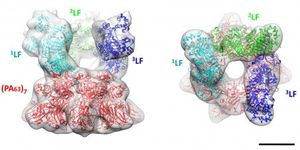When a car's engine is running, it produces smoke as a result of the combustion that powers the car. If this exhaust was allowed to flow freely into the environment, pollution would be epic. In order to mitigate the toxicity of the fumes, cars are equipped with catalytic converters. In chemistry, a catalyst is needed to speed up a chemical reaction. It's necessary in a car, because the reaction has to be fast to allow the car to function normally.
Catalytic converters use precious metals, specifically platinum, to speed up the redox reaction (oxidation and reduction) that converts the toxic fumes to less harmful vapors. How it works is that platinum is very strong and doesn't get destroyed in the reaction, and can withstand the very high temperatures of a combustion engine. Because of its properties, a catalytic converter can last the life of a car.








